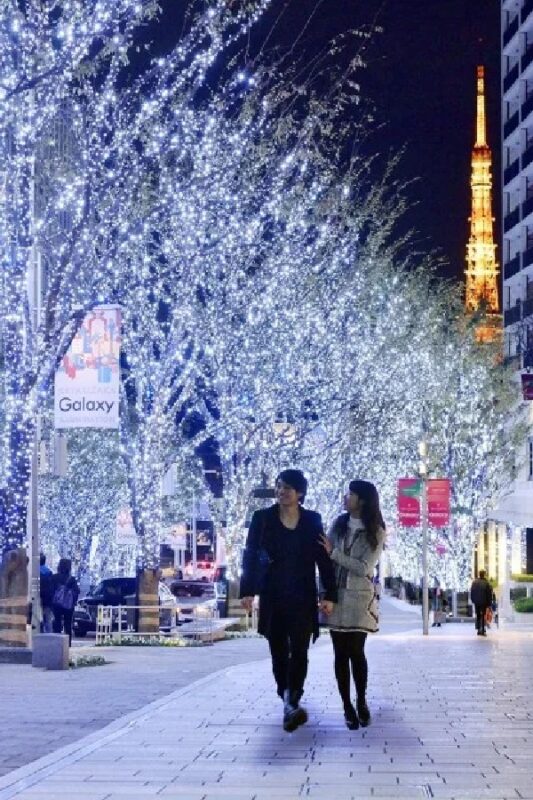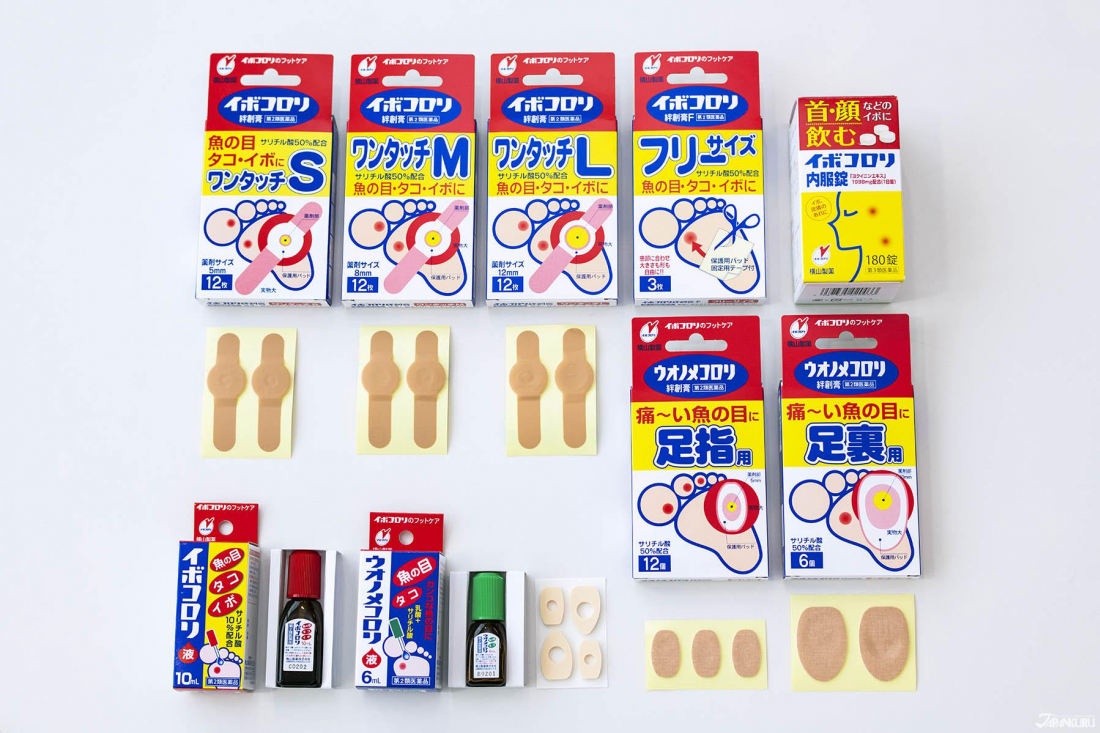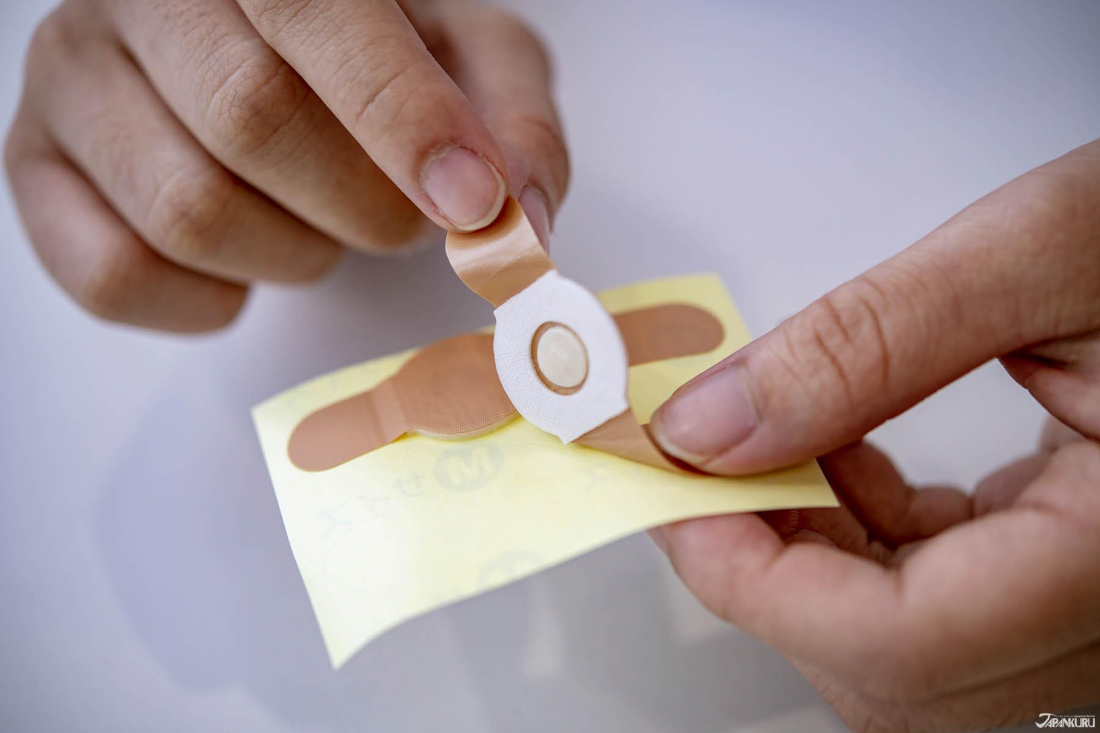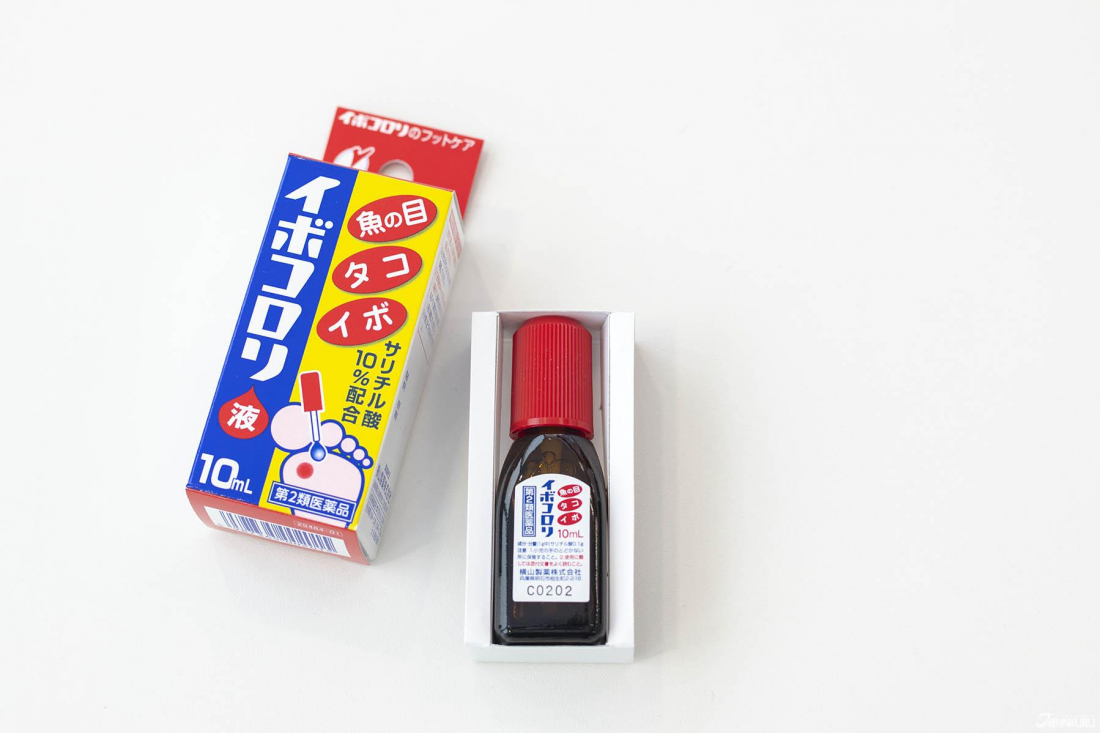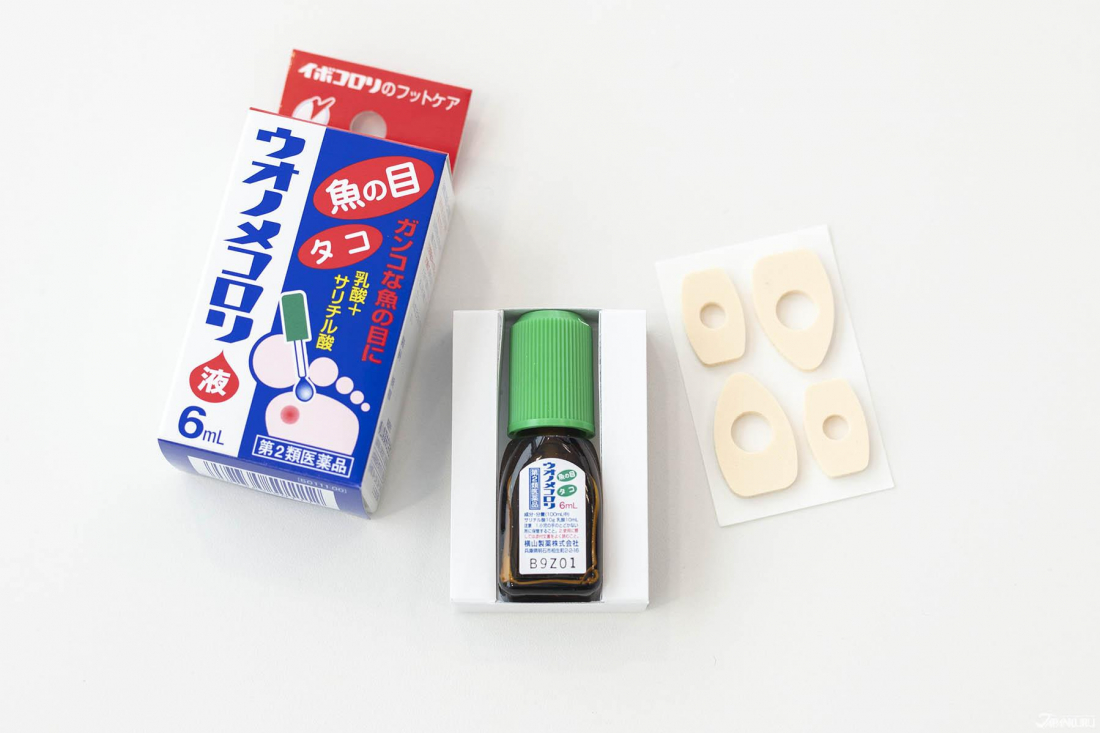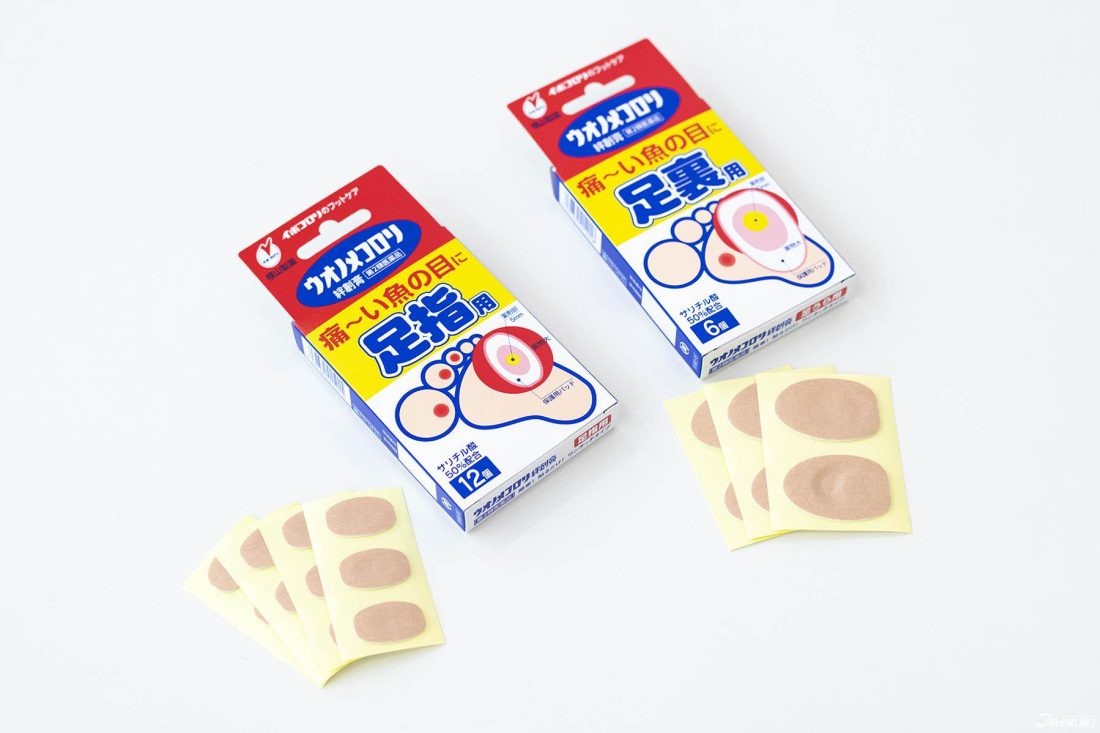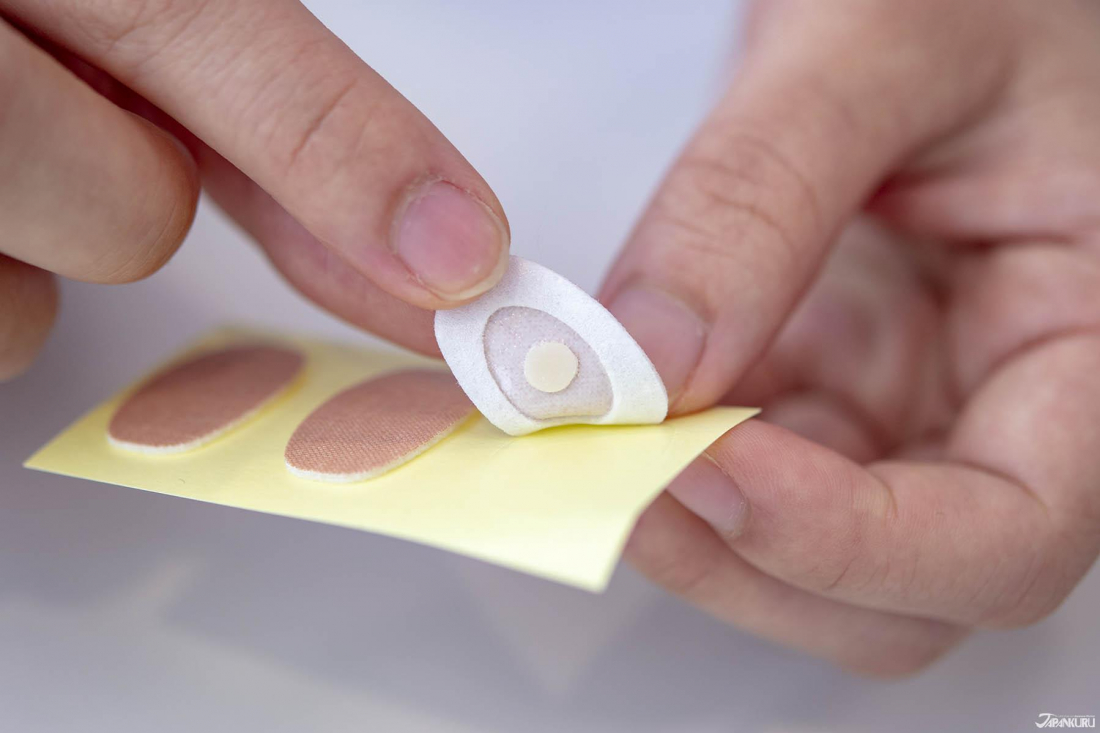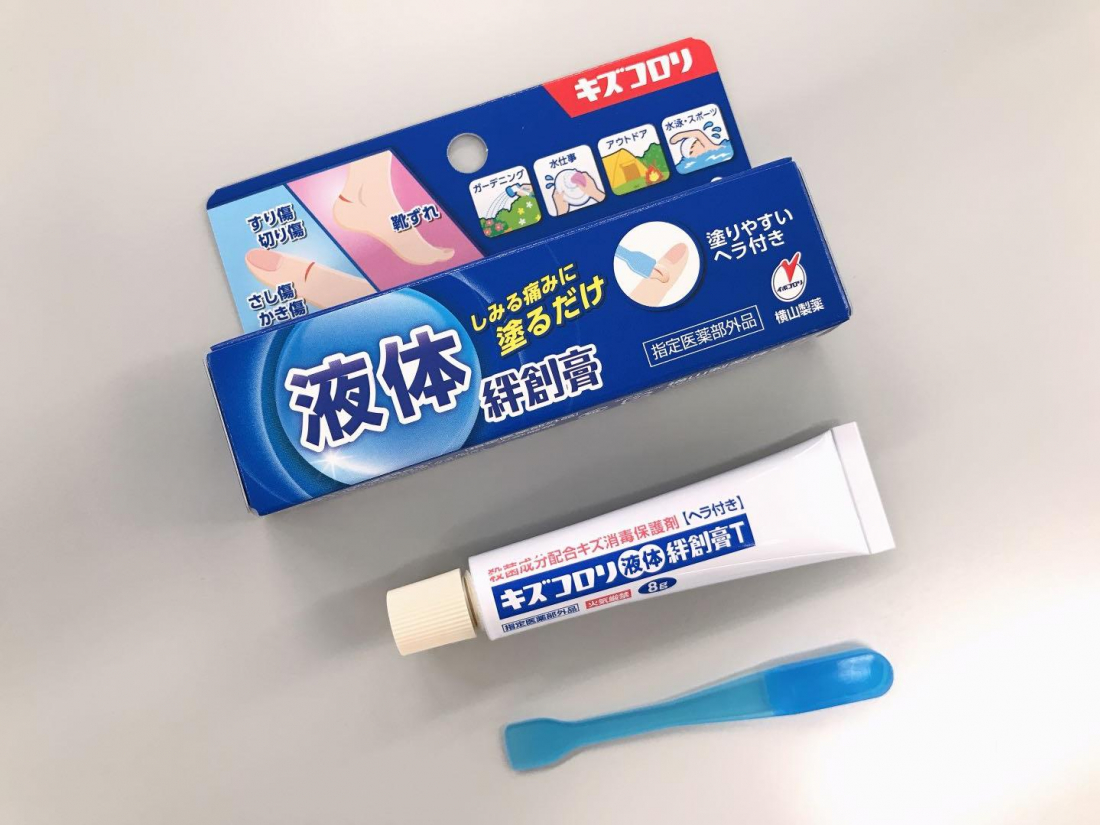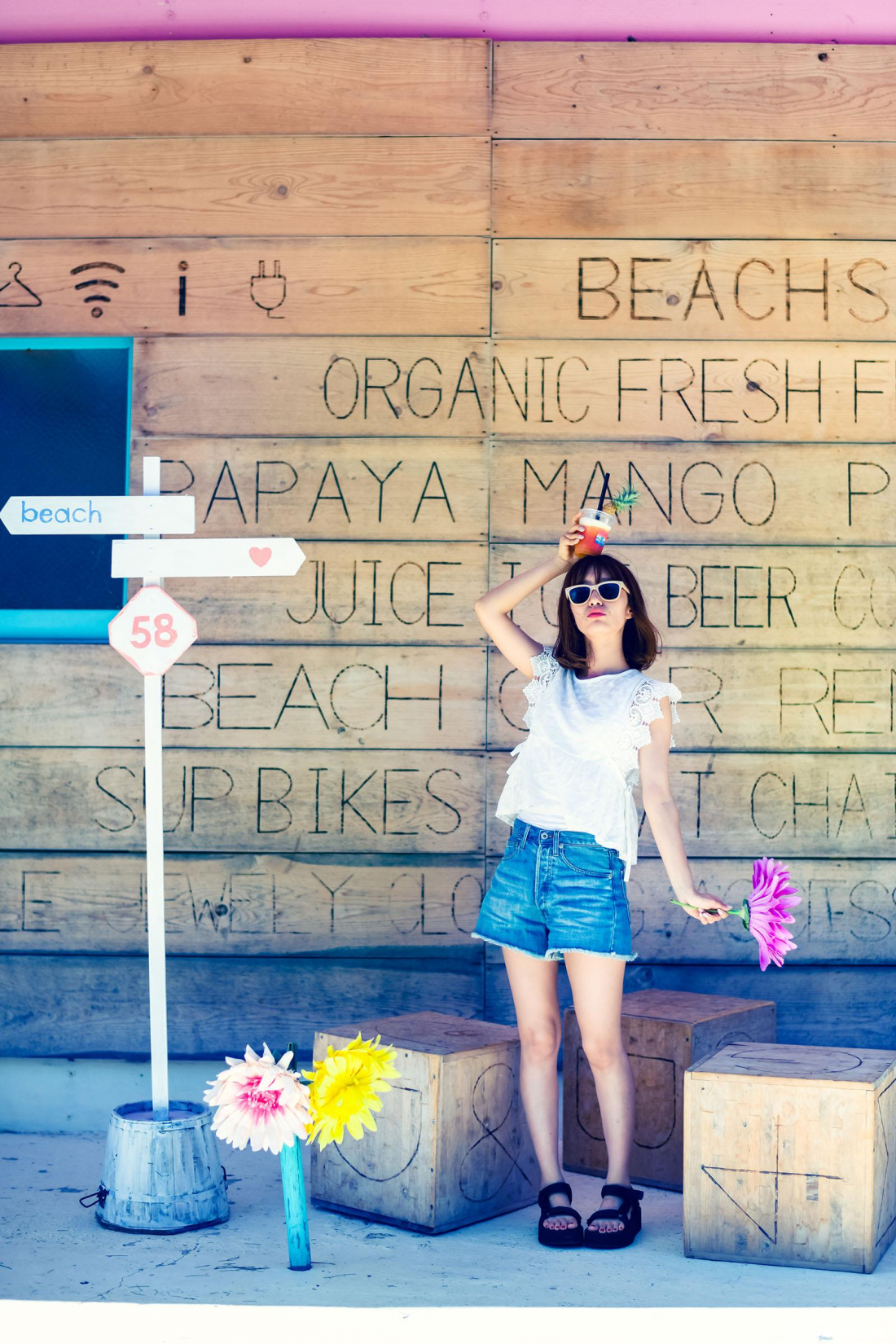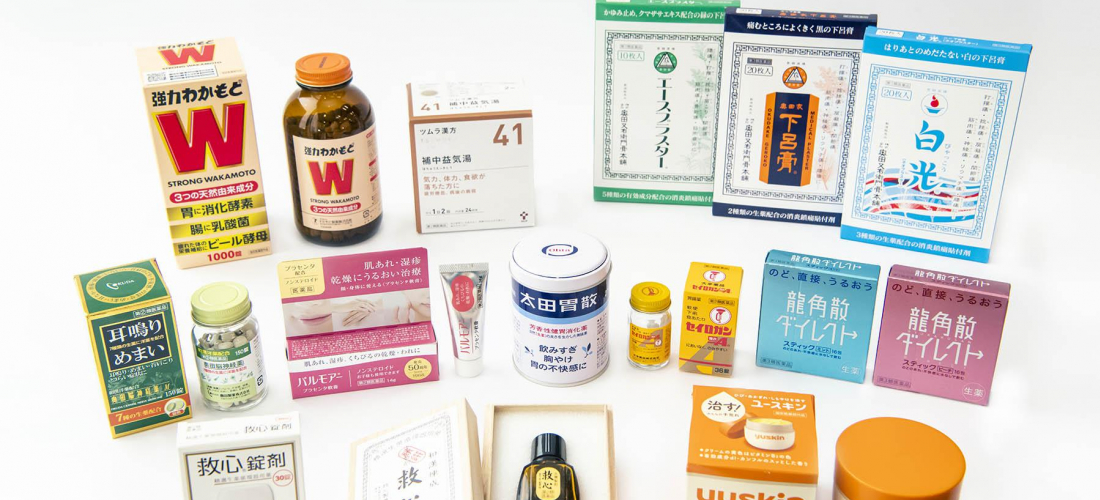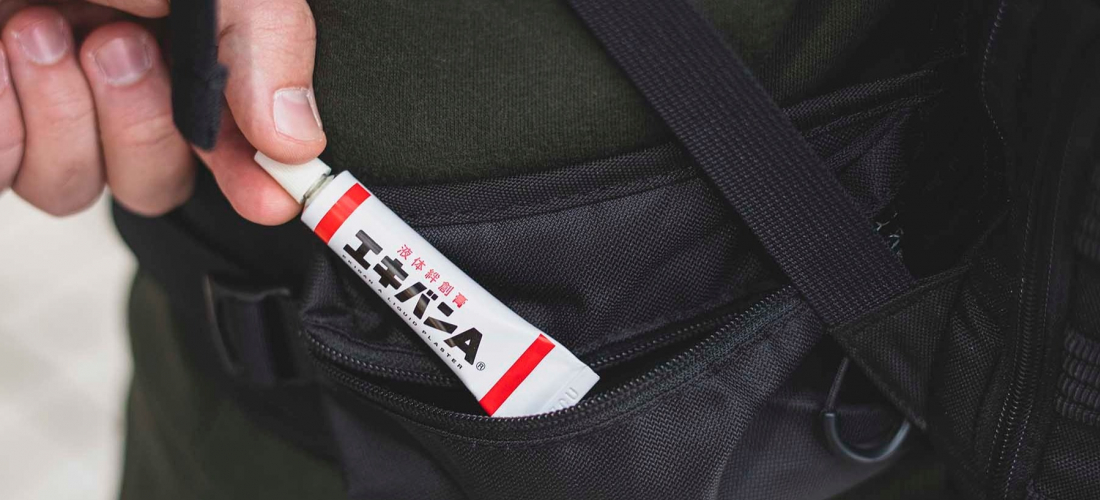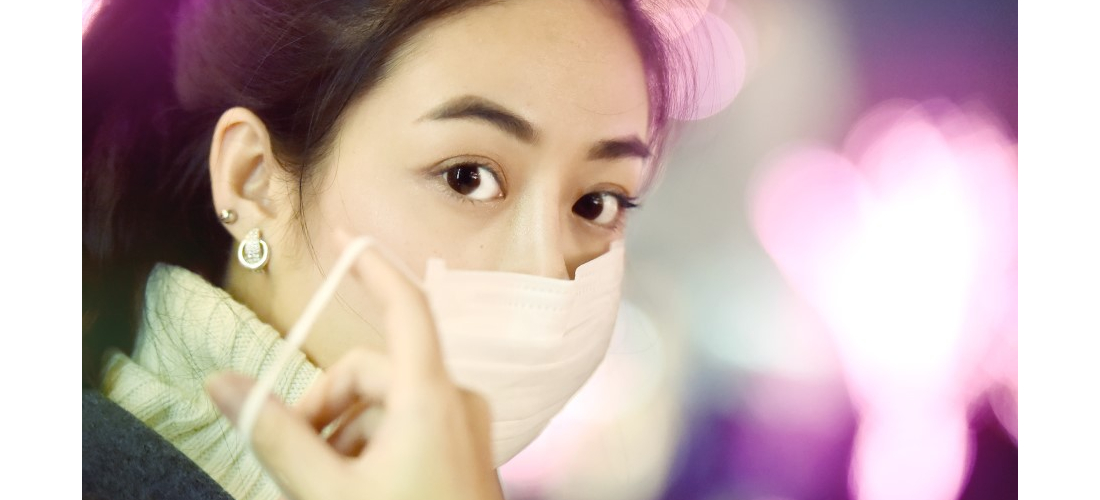
CONTENTS
“ibokorori” is one of the most popular Japanese drug store souvenirs! This series of Japanese foot care products has been solving foot problems like corns, calluses, and warts for years on end.
Summer is coming in Japan, and the weather is getting hot! With sandal season starting, and people planning trips to the beach, the pool, and other places to show off those bare feet, now is the time to concentrate on some intense foot care. Of course, when it comes to foot care in Japan, the name Yokoyama Seiyaku is bound to come up. Since their products are easily available in Japanese drug stores, they're even quite popular among travelers visiting Japan. And with everyone spending an awful lot of time at home this year due to COVID-19, it seemed like the perfect opportunity to devote ourselves to foot care and give our toes and soles some undivided attention.
The Foot-Related Worries That Weigh on the Minds of Japanese Women
Where exactly do corns, calluses, and warts come from? The biggest reason for corns and calluses is shoes. When shoes rub against the skin, apparently the pressure actually stimulates the skin's "stratum corneum" (also called the "horny layer"), and the rubbing becomes a major source of these skin issues. Pointy-toed high-heel lovers in particular can certainly appreciate the importance of foot maintenance and taking care of these kinds of problems!
Your average wart, on the other hand, is actually caused by a virus. The virus infects the cells in the deep base layers of the skin after penetrating through small scratches or cuts. The infected cells start to divide and grow into the distinct bumpy shape of a wart.
It can be hard to prevent things like corns, calluses, and warts in the first place―by the time you notice, they're already all the way there! But Yokoyama Seiyaku, a Japanese medicine and first-aid manufacturer in business since 1900, has a foot care product line that's been taking care of these and other foot-related concerns for quite some time.
“ibokorori” ・ Effective Against Corns, Calluses, and Warts
"ibokorori" One-Touch Bandage Type
「イボコロリ」ワンタッチ絆創膏タイプ
Yokoyama Seiyaku's bandage-style ibokorori comes in a variety of sizes, making it easy to choose the right size for the affected area. "Korori" (コロリ) means effortless, which is reflected in how easy it is to use the products. (Ibo/イボ means wart!)
They're easy to useーjust peel off the backing paper and apply your ibokorori like a regular bandage, placing the central portion with salicylic acid portion over the problem area. The salicylic acid softens hardened skin, even on deeper levels, helping to remove corns, calluses, and warts. You apply one and leave it for two to three days, even through bathtime. If it starts to peel off, or the effective center portion shifts on your foot, then you'll want to apply a new one.
"ibokorori" Liquid Type
「イボコロリ」塗るだけ液体タイプ
You'll also find ibokorori in liquid form. It quickly dries after being applied to the problem area, creating a white film that softens hardened skin and works on corns, calluses, and warts. We applied a little ourselves, and it's really very easy to use!
With both the liquid and bandage varieties of ibokorori, the skin underneath begins to turn white after repeated applications. When the skin of the affected area turns white and soft, the top layer can be removed with tweezers, and the process is repeated until the problem is all gone. It's actually very simple, so we'd recommend it even if you don't have any experience with similar products.
“uonomekorori” ・ Effective Against Corns
For stubborn corns and calluses, uonomekorori is especially effective! (The purpose is reflected in the name―uonome/魚の目 means corns.) Thanks to a protective pad that can be placed to surround the painful problem area, we'd definitely recommend uonomekorori for anyone suffering from an especially uncomfortable corn.
"uonomekorori" Liquid Type
「ウオノメコロリ」液体タイプ
Thanks to a mix of increased salicylic acid and added lactic acid, which moistens dried keratin, this liquid formula is apparently quite effective at softening hard skin. Just like the ibokorori, after applying uonomekorori and letting it dry properly, you're good to go―it's a relief to just take a bath or wash your dishes without having to worry! The protective cushion pads that come along with the bottle are also a relief, for the sore soles of your feet.
"uonomekorori" Bandage Type
「ウオノメコロリ」絆創膏タイプ
The bandage-types come in two different varieties, made in different sizes suited for different parts of the foot. There are small toe shapes and large ones for the sole.
An adhesive surrounds the medicated area, letting the uonomekorori stick close and better penetrate the problem area. The bandage-types also have a little cushioned pad, easing the discomfort of the corn.
___korori ・ Good for These Foot Concerns Too!
"ibokorori" Pills for Internal Use: A Wart Remedy Taken Orally
飲んで治すイボ治療薬「イボコロリ内服錠」
For anyone thinking "but what if I get a wart somewhere it would be impractical to apply topical medicine…" there's an option in pill form, too! For warts that appear on delicate skin like the face, neck, or stomach―or those in troublesome, hard to reach places like the upper back―we recommend addressing the issue with ibokorori pills for internal use. It's understandable to feel a little unsure about the idea of taking a pill for warts, but the pills are made with extract of Job's tears, so they're gentle and safe to use. Not only are they effective against warts, but they can help with dry skin as well.
"kizukorori" Liquid Bandage
液体絆創膏「キズコロリ」
"Ibo" means wart, "uonome" means corn, and "kizu" (傷) means a scratch, a cut, or any small injury. When you expose your skin to the world, any little injury can become cause for concern. Of course, you can always put a bandage on top, but the look of a grimy bandage stuck on a hand or finger all day isn't particularly attractive. On the other hand, liquid bandage kizukorori is a clear formula, so it's hardly noticeable! Apply the liquid bandage and it dries quickly, leaving the area sterilized and covered in a clear, flexible coating. Not only does it look subtle and clean, but the kizukorori can move and get wet without peeling off. Aside from taking a bath or washing the dishes, it's especially useful for swimmers, campers, and others who like to spend time outdoors.
The Rewards of Careful Foot Maintenance
With the problem areas on your feet taken care of and the skin looking clean and neat, it's hard to resist showing them off. When you know your feet look good, slipping on a pair of new sandals is even more satisfying. We can understand if a shoe shopping trip is in order!
Just imagine the possibilities―the pool, the beach, maybe even a luxurious resort? Perhaps you're planning a trip to a Japanese island, or an excursion roaming the city in some stylish new sandals? Yokoyama Seiyaku's series of foot care products are available for reasonable prices in Japanese drug stores all over the country, so you can certainly buy some ibokorori or kizukorori to bring home for yourself or a friend, but it might be worth picking some up to try as soon as you arrive!
COMMENT
FEATURED MEDIA
VIEW MORE 
A New Tokyo Animal Destination: Relax & Learn About the World’s Animals in Japan
#pr #japankuru #anitouch #anitouchtokyodome #capybara #capybaracafe #animalcafe #tokyotrip #japantrip #카피바라 #애니터치 #아이와가볼만한곳 #도쿄여행 #가족여행 #東京旅遊 #東京親子景點 #日本動物互動體驗 #水豚泡澡 #東京巨蛋城 #เที่ยวญี่ปุ่น2025 #ที่เที่ยวครอบครัว #สวนสัตว์ในร่ม #TokyoDomeCity #anitouchtokyodome

Shohei Ohtani Collab Developed Products & Other Japanese Drugstore Recommendations From Kowa
#pr #japankuru
#kowa #syncronkowa #japanshopping #preworkout #postworkout #tokyoshopping #japantrip #일본쇼핑 #일본이온음료 #오타니 #오타니쇼헤이 #코와 #興和 #日本必買 #日本旅遊 #運動補充能量 #運動飲品 #ช้อปปิ้งญี่ปุ่น #เครื่องดื่มออกกำลังกาย #นักกีฬา #ผลิตภัณฑ์ญี่ปุ่น #อาหารเสริมญี่ปุ่น

도쿄 근교 당일치기 여행 추천! 작은 에도라 불리는 ‘가와고에’
세이부 ‘가와고에 패스(디지털)’ 하나면 편리하게 이동 + 가성비까지 완벽하게! 필름카메라 감성 가득한 레트로 거리 길거리 먹방부터 귀여움 끝판왕 핫플&포토 스폿까지 총집합!
Looking for day trips from Tokyo? Try Kawagoe, AKA Little Edo!
Use the SEIBU KAWAGOE PASS (Digital) for easy, affordable transportation!
Check out the historic streets of Kawagoe for some great street food and plenty of picturesque retro photo ops.
#pr #japankuru #도쿄근교여행 #가와고에 #가와고에패스 #세이부패스 #기모노체험 #가와고에여행 #도쿄여행코스 #도쿄근교당일치기 #세이부가와고에패스
#tokyotrip #kawagoe #tokyodaytrip #seibukawagoepass #kimono #japantrip

Hirakata Park, Osaka: Enjoy the Classic Japanese Theme Park Experience!
#pr #japankuru #hirakatapark #amusementpark #japantrip #osakatrip #familytrip #rollercoaster #retrôvibes #枚方公園 #大阪旅遊 #關西私房景點 #日本親子旅行 #日本遊樂園 #木造雲霄飛車 #히라카타파크 #สวนสนุกฮิราคาตะพาร์ค

🍵Love Matcha? Upgrade Your Matcha Experience With Tsujiri!
・160년 전통 일본 말차 브랜드 츠지리에서 말차 덕후들이 픽한 인기템만 골라봤어요
・抹茶控的天堂!甜點、餅乾、飲品一次滿足,連伴手禮都幫你列好清單了
・ส่องมัทฉะสุดฮิต พร้อมพาเที่ยวร้านดังในอุจิ เกียวโต
#pr #japankuru #matcha #matchalover #uji #kyoto #japantrip #ujimatcha #matchalatte #matchasweets #tsujiri #말차 #말차덕후 #츠지리 #교토여행 #말차라떼 #辻利抹茶 #抹茶控 #日本抹茶 #宇治 #宇治抹茶 #日本伴手禮 #抹茶拿鐵 #抹茶甜點 #มัทฉะ #ของฝากญี่ปุ่น #ชาเขียวญี่ปุ่น #ซึจิริ #เกียวโต

・What Is Nenaito? And How Does This Sleep Care Supplement Work?
・你的睡眠保健品——認識「睡眠茶氨酸錠」
・수면 케어 서플리먼트 ‘네나이토’란?
・ผลิตภัณฑ์เสริมอาหารดูแลการนอน “Nenaito(ネナイト)” คืออะไร?
#pr #japankuru #sleepcare #japanshopping #nenaito #sleepsupplement #asahi #睡眠茶氨酸錠 #睡眠保健 #朝日 #l茶胺酸 #日本藥妝 #日本必買 #일본쇼핑 #수면 #건강하자 #네나이토 #일본영양제 #อาหารเสริมญี่ปุ่น #ช้อปปิ้งญี่ปุ่น #ร้านขายยาญี่ปุ่น #ดูแลตัวเองก่อนนอน #อาซาฮิ

Japanese Drugstore Must-Buys! Essential Items from Hisamitsu® Pharmaceutical
#PR #japankuru #hisamitsu #salonpas #feitas #hisamitsupharmaceutical #japanshopping #tokyoshopping #traveltips #japanhaul #japantrip #japantravel

Whether you grew up with Dragon Ball or you just fell in love with Dragon Ball DAIMA, you'll like the newest JINS collab. Shop this limited-edition Dragon Ball accessory collection to find some of the best Dragon Ball merchandise in Japan!
>> Find out more at Japankuru.com! (link in bio)
#japankuru #dragonball #dragonballdaima #animecollab #japanshopping #jins #japaneseglasses #japantravel #animemerch #pr

This month, Japankuru teamed up with @official_korekoko to invite three influencers (originally from Thailand, China, and Taiwan) on a trip to Yokohama. Check out the article (in Chinese) on Japankuru.com for all of their travel tips and photography hints - and look forward to more cool collaborations coming soon!
【橫濱夜散策 x 教你怎麼拍出網美照 📸✨】
每次來日本玩,是不是都會先找旅日網紅的推薦清單?
這次,我們邀請擁有日本豐富旅遊經驗的🇹🇭泰國、🇨🇳中國、🇹🇼台灣網紅,帶你走進夜晚的橫濱!從玩樂路線到拍照技巧,教你怎麼拍出最美的夜景照。那些熟悉的景點,換個視角說不定會有新發現~快跟他們一起出發吧!
#japankuru #橫濱紅磚倉庫 #汽車道 #中華街 #yokohama #japankuru #橫濱紅磚倉庫 #汽車道 #中華街 #yokohama #yokohamaredbrickwarehouse #yokohamachinatown

If you’re a fan of Vivienne Westwood's Japanese designs, and you’re looking forward to shopping in Harajuku this summer, we’ve got important news for you. Vivienne Westwood RED LABEL Laforet Harajuku is now closed for renovations - but the grand reopening is scheduled for July!
>> Find out more at Japankuru.com! (link in bio)
#japankuru #viviennewestwood #harajuku #omotesando #viviennewestwoodredlabel #viviennewestwoodjapan #비비안웨스트우드 #오모테산도 #하라주쿠 #日本購物 #薇薇安魏斯伍德 #日本時尚 #原宿 #表參道 #japantrip #japanshopping #pr

Ready to see TeamLab in Kyoto!? At TeamLab Biovortex Kyoto, the collective is taking their acclaimed immersive art and bringing it to Japan's ancient capital. We can't wait to see it for ourselves this autumn!
>> Find out more at Japankuru.com! (link in bio)
#japankuru #teamlab #teamlabbiovortex #kyoto #kyototrip #japantravel #artnews
Photos courtesy of teamLab, Exhibition view of teamLab Biovortex Kyoto, 2025, Kyoto ® teamLab, courtesy Pace Gallery

Japanese Makeup Shopping • A Trip to Kamakura & Enoshima With Canmake’s Cool-Toned Summer Makeup
#pr #canmake #enoshima #enoden #에노시마 #캔메이크 #japanesemakeup #japanesecosmetics

⚔️The Robot Restaurant is gone, but the Samurai Restaurant is here to take its place. Check it out, and don't forget your coupon!
🍣신주쿠의 명소 로봇 레스토랑이 사무라이 레스토랑으로 부활! 절찬 쿠폰 발급중
💃18歲以上才能入場的歌舞秀,和你想的不一樣!拿好優惠券去看看~
#tokyo #shinjuku #samurairestaurant #robotrestaurant #tokyotrip #도쿄여행 #신주쿠 #사무라이레스토랑 #이색체험 #할인이벤트 #歌舞伎町 #東京景點 #武士餐廳 #日本表演 #日本文化體驗 #japankuru #japantrip #japantravel #japanlovers #japan_of_insta

Japanese appliance & electronics shopping with our KOJIMA x BicCamera coupon!
用JAPANKURU的KOJIMA x BicCamera優惠券買這些正好❤️
코지마 x 빅 카메라 쿠폰으로 일본 가전 제품 쇼핑하기
#pr #japankuru #japanshopping #kojima #biccamera #japaneseskincare #yaman #dji #osmopocket3 #skincaredevice #日本購物 #美容儀 #相機 #雅萌 #日本家電 #일본여행 #면세 #여행꿀팁 #일본쇼핑리스트 #쿠폰 #일본쇼핑 #일본브랜드 #할인 #코지마 #빅카메라 #japankurucoupon
MAP OF JAPAN
SEARCH BY REGION

LATEST
VIEW MOREEVENT CALENDAR
VIEW MORE